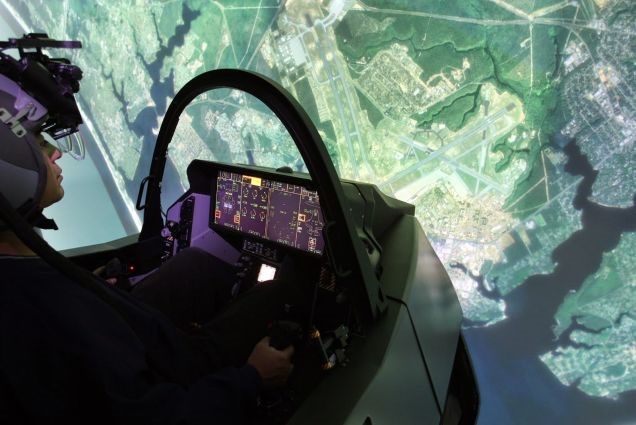
Regardless of what stage of life it may occur in, quadriplegia is a traumatic experience that changes everything. For some, this unfortunately means giving up on life, while for others, it’s an opportunity to test new technology in the hopes of finding a cure for themselves and for future generations. Jan Scheuermann is a 55-year-old woman who developed limb paralysis later on in her life, losing the use of her arms and legs, but today, she’s learning how to manipulate robots with her mind. Scheuermann’s latest effort had her piloting an F-35 fighter with her mind.
Scheuermann’s brush with mind-machine-interfaces began in 2012, when scientists and doctors from the University Of Pittsburgh School Of Medicine implanted a pair of electrode units into the quadrant of her brain responsible for arm and hand movement. The device then translated the neural patterns that fired when Sheuermann imagined moving her arms, into a code sequence understood by a robotic arm. The ensuing results were considered a breakthrough in the field of rehabilitation and robotics, resulting in the capture and duplication of a total of 10 arm and hands motions.

Noticing the project’s potential, DARPA — the United States’ Defense Advanced Research Projects Agency — wanted see if it were possible for Sheuermann to fly a F-35 fighter jet in a flight simulator using only her mind. But instead of exploring the notion of mind-controlling the robotic arm that handles the controls, DARPA taught to directly control the plane’s movements using her brain, completely devoid of any physical input.
Here’s a video of Scheuermann’s flight in action
“Instead of thinking about controlling a joystick, which is what our ace pilots do when they’re driving this thing, Sheuermann’s thinking about controlling the airplane directly,” notes DARPA director Arati Prabhakar. “For someone who’s never flown—she’s not a pilot in real life—she’s flying that simulator directly from her neural signaling.”
Although the origins of neural interfaces date back to science fiction, the first brain-controlled videogame occurred in 2006, when scientists from Washington University created a brain interface that allowed a teenager to play the 1978 Atari classic, Space Invaders.
The make takeaway here, however, is the reprogramming of the same neural writing that controlled a robotic arm to fly a virtual jet. This is a huge step up from using purpose-specific neurons to control specific devices, such as cochlear implants, as an interface allowed a much broader application.
Source: DailyDot via Defensetech.org
Advertisement
Learn more about Electronic Products Magazine





